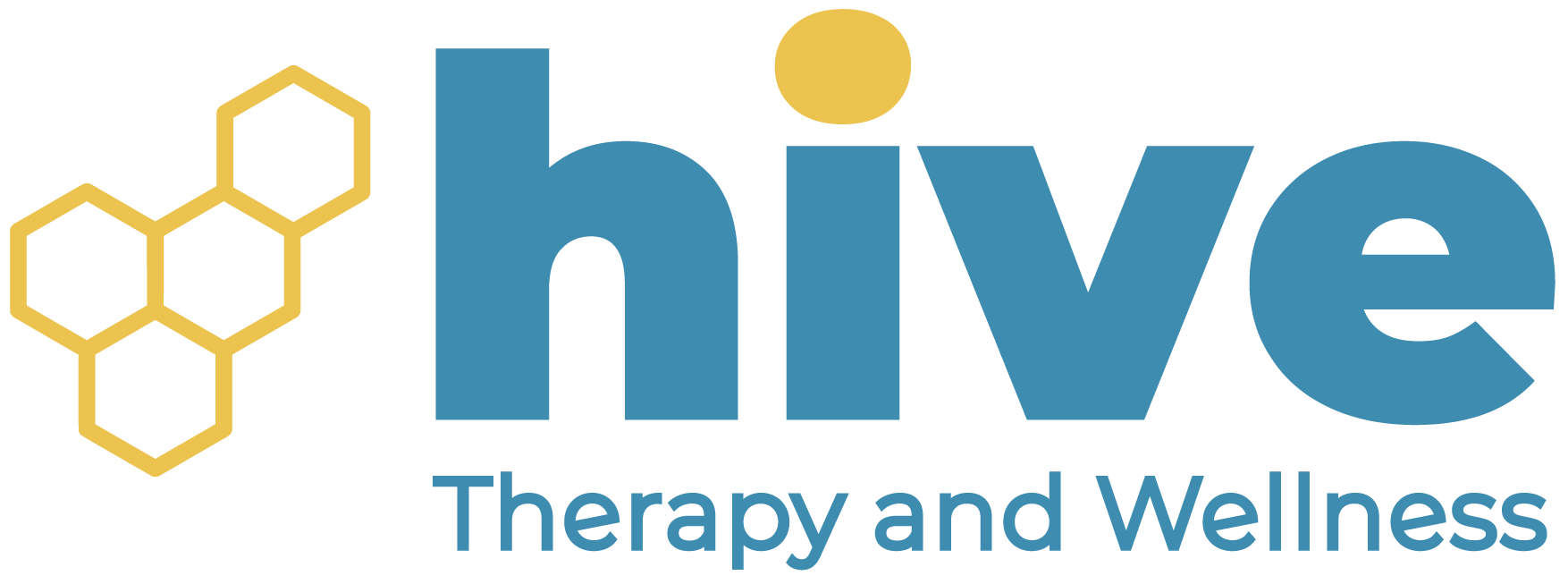Childbirth Preparation
Move Better. Live Fuller. Your Wellness Journey Starts Here.
Schedule a FREE Discovery Call!
What Is Childbirth Preparation?
While childbirth preparation may sound like a pretty straightforward topic, it actually involves so much more than just the actual birthing process.
Preparing for childbirth means facilitating a positive pregnancy, a successful delivery, and a smooth postpartum experience. Educating parents on what to expect and how to prepare for these experiences can significantly improve their physical and mental experience.
Regardless of whether you are delivering for the first time or not, vaginally or via c-section, the body still experiences significant changes. You can maintain optimal health and a better overall experience by educating yourself and physically preparing your body. So, what does childbirth preparation actually entail?

During Pregnancy
Firstly, it is essential to know what to expect. Your body will experience many physical changes, and you won’t want to be blindsided by these changes—as it could be confusing, inconvenient, or even scary to be left in the dark. Educating yourself on what changes could happen and why they occur can make the process much less affronting throughout your pregnancy journey. Preparation may seem intimidating, but remember, you don’t have to do this alone. There are plenty of educated and knowledgeable individuals on your health team to help you and answer your questions.
One important member of your health team to consider is a pelvic floor physical therapist. For many, pelvic floor physical therapy is often not considered in the childbirth preparation plan, even though preparing this part of your body is extremely beneficial to both pregnancy and childbirth. Not to mention, the pelvic floor is a major piece of the puzzle! It will be doing a ton of work and providing necessary support throughout your pregnancy and during labor. Therefore, if you want to increase your physical and mental preparedness going into pregnancy, it is highly recommended to seek out a pelvic floor professional—preferably at the start of your second trimester, but even if you are past that period, you shouldn’t give up on physical therapy.
As mentioned above, a pelvic floor physical therapist will prepare you for pregnancy and labor. They can educate you on many of the changes your body will experience, and physically prepare you for those changes. Let’s discuss some of these physical changes, so that you can better understand how and why physical therapy is so helpful during pregnancy…
- Muscle and Ligament Changes: Pregnancy will cause changes in the muscles throughout the hips, butt, abdomen, back, pelvic floor, and diaphragm. Any of these muscles can become weak, tight, inflexible, or poorly coordinated as they support a growing weight in your stomach, and their angles of pull change due to the normal shifts that occur during pregnancy. Additionally, throughout your pregnancy but specifically as you get closer to delivery, your ligaments relax and expand. All of these changes can result in aches and pains.
- Spinal Changes: All three of your spinal curves and pelvic tilt significantly change during pregnancy to accommodate the growing baby. This can create back pain, especially in the lower back, that may radiate into the hips and legs. This change in the spine can also cause shoulder, neck and knee pain as your spinal posture changes.
- Uterine Changes: Your uterus, which has ligaments attached to it, significantly increases in size, eventually moves outside of the pelvic bowl, and rests on your abdominal muscles.
- Center of Gravity: Your center of gravity (which is what allows your body to stay balanced both while standing or during movement) changes, which affects your lifting mechanics and posture.
- Increase in Pressure: As the weight in your uterus and placenta grows, your lower body will experience an increase of pressure exerted onto it. This can result in pain similar to sciatica, low back pain, pelvic pain, and pelvic floor dysfunction as the pressure pushes on your bladder and pelvic floor muscles.
These all might just sound like obvious changes as your body supports a baby, but what does it really mean for you? The reality is that these changes lead to painful, uncomfortable, and inconvenient symptoms during and after pregnancy. Some common symptoms experienced because of these bodily changes include:
- Round ligament pain
- Pain with intercourse
- Constipation
- Urinary incontinence
- Frequent falls
- Low back pain
- Pelvic pain
- Diastasis recti
- Pelvic girdle pain
- Hip pain
- Pelvic organ prolapse
While many people may know to expect these changes and symptoms, they often just accept them as is, thinking it is just a part of the pregnancy package—and that’s just untrue. You can work to prevent pain, discomfort, and other symptoms simply by acknowledging the importance of pelvic floor care. With the help of a pelvic floor physical therapist, you can better understand and counteract these changes and their side effects by establishing a program with exercises and mobility techniques—before and after delivery. Physical therapy is completely safe during pregnancy, and can relieve pain or discomfort where it is needed in addition to preparing you for delivery and recovery.
Keep in mind that how you prepare for pregnancy and delivery beforehand will affect the healing process afterwards. To minimize struggles or symptoms after childbirth, you will want to prepare your body beforehand.
With Delivery
When it comes to the actual delivery, the pelvic floor plays a lead role. It aids in the pushing maneuvers during labor, which is why the health of your pelvic floor matters so much for this moment. While a pelvic floor therapist won’t be in the hospital room with you during labor, they can still prepare your pelvic floor for this major event ahead of time. Helping you understand these muscles and their coordination, as well as making sure they are strengthened, flexible, and ready for labor are just a few of the amazing things a pelvic floor physical therapist can do.
In addition to addressing the health of your pelvic floor, they can assist with core strength (which is important for pushing mechanics), guide you through possible labor positions, and teach you diaphragmatic breathing in preparation for childbirth. All of these can help make the labor process smoother, more tolerable, and more efficient.
Preparing for labor in these ways can lower the possibility of struggle or complications. While each person’s body and birthing experience are unique, and complications are not necessarily something you can predict, it definitely doesn’t hurt to do everything you can to put the odds in your favor.
Postpartum
The bodily changes don’t end with childbirth. Unfortunately, the extreme pregnancy changes and intensive birth experience that the body goes through—vaginal or cesarean—can cause further issues even after the pregnancy is complete. Many people experience postpartum pain, bowel or bladder incontinence, constipation, painful sex, hemorrhoids, and more after childbirth.
To minimize these symptoms, it is essential to prepare your body not only for a successful childbirth, but also for a smoother healing process. While it may not be possible to completely prevent any or all postpartum symptoms, you can still alleviate them tremendously with the help of a pelvic floor physical therapist.
During the postpartum period, a physical therapist can actively assist with recovery. They can instruct you through safe exercises to regain flexibility and muscle strength, assist with spinal realignment, provide pain relief, and address any pelvic floor dysfunctions—allowing you to heal quicker and be up to the task of chasing a little one.
Do You Really Need Childbirth Preparation?
Delivery and pregnancy don’t just create physical changes to the body—there are plenty of emotional effects, too. Going in completely blind may create a lot more confusion and difficulties later on. With how the media and our society normalizes pregnancy and childbirth, you may be tempted to simply ride the wave. However, you should instead think of it similarly to how you’d prepare for a marathon.
You wouldn’t attend a 26.2-mile run without practicing your form, preparing the proper attire and shoes, packing water, checking the course map, and mentally preparing yourself first…right? Because that would set you up for potential troubles later on. Childbirth is the same. During your pregnancy and before delivery, you’ll want to prepare appropriately, too! Regardless of whether you have gone through it once before or not, it is still crucial to prepare your body for this experience.
It is also important to understand that just being active isn’t enough to mitigate the natural changes that will occur. While being active is important, it will not magically prevent urinary incontinence, hip pain, low back pain, or the many other symptoms mentioned earlier that result from pregnancy-related bodily changes.
Think to yourself: What kind of parent do you see yourself being? When your child is growing fast and begins running around, will you be the parent happily following behind them? Or, are you just watching from afar because every time you try to kick a ball or run after them, you are leaking or feeling something fall out? Truly, you cannot predict what is going to occur during delivery. Therefore, it is essential to try and stack the odds in your favor by ensuring you are both physically and mentally prepared.
Physical Therapy for Childbirth Preparation
Luckily for parents, pelvic floor physical therapists are uniquely positioned to provide education and support during both pregnancy and postpartum recovery. They can work with you and your partner on a preparation plan for delivery, such as understanding the pelvic floor, pushing mechanics, body positioning, and much more. They can educate you on what to expect with normal bodily changes during pregnancy and prescribe exercises to support these changes. Additionally, they are experts in providing resources for both pregnancy and delivery—which can include books, support belts, balls, and so much more.
Pregnancy is a good time to assess pelvic floor function, which includes bowel and bladder continence, possibilities of prolapse, back and hip function, and sexual function. Your pelvic floor therapist can determine your baseline level of function and identify areas for improvement and intervention. They can also assess your level of preparedness for a successful pregnancy, childbirth, and postpartum experience.
When it comes to these physical aspects of preparing for childbirth, you can expect the following methods to be considered by your pelvic floor therapist:
Pelvic Floor Care
- As described above, addressing potential issues (bowels, bladder, prolapse, etc).
- Increasing awareness and understanding of the pelvic floor and its role in childbirth.
- Learning techniques to prepare the perineum for birth.
Core Stability
- As the body changes with the baby’s growth, it is important to consider core strength and coordination to prevent straining, injury, and pain.
- Assess the level of abdominal separation and initiate proper strengthening and lifting mechanics to minimize this separation.
Posture
- Learning correct posture to prevent body pains during pregnancy, as well as appropriate form for lifting as the pregnancy progresses.
- This includes posture for postpartum activities, such as breastfeeding positioning or carrying the baby.
Birthing Positions
- Understanding different options for birthing positions, improving muscle awareness in those positions to improve pelvic floor drop and opening, reviewing options for positioning aids, and if needed, working on general strength and flexibility to support getting into and holding these positions.
Breathing and Relaxation
- Learning diaphragmatic breathing to promote relaxation, and how to control breathing for labor.
Pain Management
- Learning techniques and tools that can be safely used for pain management during pregnancy.
Vaginal Delivery After Cesarean (VBACK)
- Optimizing pelvic alignment and muscle relaxation as well as scar mobilization to help obtain a vaginal delivery after a cesarean.
Postpartum Preparation
- Body mechanics for lifting and carrying a baby.
- Building out necessary support to allow for adequate healing.
- Outlining exercise restrictions.
- Building appropriate exercise and mobility plans to improve healing and recovery.
- Discussing proper fluid and fiber intake.
Partner Involvement
- Outlining the regular changes that will occur and how to best support their partner through them.
- Providing exercises they can perform together to support the pregnant partner.
- Practicing how to best provide support during birth positions.
- Empowering them to understand the birth plan and discuss how they can best advocate for their partner.
- Discuss how to improve support following delivery.
Pelvic floor physical therapists know about the body and how it changes during pregnancy and childbirth. Working with a professional can teach you what to expect physically and provide education and resources that support you during these changes (such as teaching massage techniques, advising diet changes, or suggesting helpful products such as pregnancy belts and more).
They can connect you with other providers both inside and outside the hospital, based on your goals and considerations—which can include doulas or midwives, massage therapists, and more. They can even suggest online or in-person classes depending on your personal preferences and pregnancy goals. Regardless, your pelvic floor therapist can be invaluable to your health team throughout your childbirth plan and pregnancy journey.
At Hive Therapy and Wellness, we create an individualized childbirth preparation plan based on your unique needs. While in our care, you can expect any of the following treatments to be part of your childbirth preparation care plan:
- Neuromuscular re-education
- Manual therapy
- Exercise prescription
- Cupping
- Behavioral modification
- Therapeutic activities
- Spinal manipulation
- Therapeutic modalities
- Biofeedback
While childbirth preparation may sound like a pretty straightforward topic, it actually involves so much more than just the actual birthing process.
Preparing for childbirth means facilitating a positive pregnancy, a successful delivery, and a smooth postpartum experience. Educating parents on what to expect and how to prepare for these experiences can significantly improve their physical and mental experience.
Regardless of whether you are delivering for the first time or not, vaginally or via c-section, the body still experiences significant changes.
You can maintain optimal health and a better overall experience by educating yourself and physically preparing your body. So, what does childbirth preparation actually entail?
During Pregnancy
Firstly, it is essential to know what to expect. Your body will experience many physical changes, and you won’t want to be blindsided by these changes—as it could be confusing, inconvenient, or even scary to be left in the dark.
Educating yourself on what changes could happen and why they occur can make the process much less affronting throughout your pregnancy journey.
Preparation may seem intimidating, but remember, you don’t have to do this alone. There are plenty of educated and knowledgeable individuals on your health team to help you and answer your questions.
One important member of your health team to consider is a pelvic floor physical therapist.
For many, pelvic floor physical therapy is often not considered in the childbirth preparation plan, even though preparing this part of your body is extremely beneficial to both pregnancy and childbirth.
Not to mention, the pelvic floor is a major piece of the puzzle! It will be doing a ton of work and providing necessary support throughout your pregnancy and during labor.
Therefore, if you want to increase your physical and mental preparedness going into pregnancy, it is highly recommended to seek out a pelvic floor professional—preferably at the start of your second trimester, but even if you are past that period, you shouldn’t give up on physical therapy.
As mentioned above, a pelvic floor physical therapist will prepare you for pregnancy and labor. They can educate you on many of the changes your body will experience, and physically prepare you for those changes.
Let’s discuss some of these physical changes, so that you can better understand how and why physical therapy is so helpful during pregnancy…
Muscle and Ligament Changes
Pregnancy will cause changes in the muscles throughout the hips, butt, abdomen, back, pelvic floor, and diaphragm.
Any of these muscles can become weak, tight, inflexible, or poorly coordinated as they support a growing weight in your stomach, and their angles of pull change due to the normal shifts that occur during pregnancy.
Additionally, throughout your pregnancy but specifically as you get closer to delivery, your ligaments relax and expand. All of these changes can result in aches and pains.
Spinal Changes
All three of your spinal curves and pelvic tilt significantly change during pregnancy to accommodate the growing baby.
This can create back pain, especially in the lower back, that may radiate into the hips and legs. This change in the spine can also cause shoulder, neck and knee pain as your spinal posture changes.
Uterine Changes
Your uterus, which has ligaments attached to it, significantly increases in size, eventually moves outside of the pelvic bowl, and rests on your abdominal muscles.
Center of Gravity
Your center of gravity (which is what allows your body to stay balanced both while standing or during movement) changes, which affects your lifting mechanics and posture.
Increase in Pressure
As the weight in your uterus and placenta grows, your lower body will experience an increase of pressure exerted onto it.
This can result in pain similar to sciatica, low back pain, pelvic pain, and pelvic floor dysfunction as the pressure pushes on your bladder and pelvic floor muscles.
These all might just sound like obvious changes as your body supports a baby, but what does it really mean for you? The reality is that these changes lead to painful, uncomfortable, and inconvenient symptoms during and after pregnancy.
Some common symptoms experienced because of these bodily changes include:
- Round ligament pain
- Pain with intercourse
- Constipation
- Urinary incontinence
- Frequent falls
- Low back pain
- Pelvic pain
- Diastasis recti
- Pelvic girdle pain
- Hip pain
- Pelvic organ prolapse
While many people may know to expect these changes and symptoms, they often just accept them as is, thinking it is just a part of the pregnancy package—and that’s just untrue.
You can work to prevent pain, discomfort, and other symptoms simply by acknowledging the importance of pelvic floor care.
With the help of a pelvic floor physical therapist, you can better understand and counteract these changes and their side effects by establishing a program with exercises and mobility techniques—before and after delivery.
Physical therapy is completely safe during pregnancy, and can relieve pain or discomfort where it is needed in addition to preparing you for delivery and recovery.
Keep in mind that how you prepare for pregnancy and delivery beforehand will affect the healing process afterwards. To minimize struggles or symptoms after childbirth, you will want to prepare your body beforehand.
With Delivery
When it comes to the actual delivery, the pelvic floor plays a lead role. It aids in the pushing maneuvers during labor, which is why the health of your pelvic floor matters so much for this moment.
While a pelvic floor therapist won’t be in the hospital room with you during labor, they can still prepare your pelvic floor for this major event ahead of time.
Helping you understand these muscles and their coordination, as well as making sure they are strengthened, flexible, and ready for labor are just a few of the amazing things a pelvic floor physical therapist can do.
In addition to addressing the health of your pelvic floor, they can assist with core strength (which is important for pushing mechanics), guide you through possible labor positions, and teach you diaphragmatic breathing in preparation for childbirth.
All of these can make the labor process smoother, more tolerable, and more efficient.
Preparing for labor in these ways can lower the possibility of struggle or complications. While each person’s body and birthing experience are unique, and complications are not necessarily something you can predict, it definitely doesn’t hurt to do everything you can to put the odds in your favor.
Postpartum
The bodily changes don’t end with childbirth. Unfortunately, the extreme pregnancy changes and intensive birth experience that the body goes through—vaginal or cesarean—can cause further issues even after the pregnancy is complete.
Many people experience postpartum pain, bowel or bladder incontinence, constipation, painful sex, hemorrhoids, and more after childbirth.
To minimize these symptoms, it is essential to prepare your body not only for a successful childbirth, but also for a smoother healing process.
While it may not be possible to completely prevent any or all postpartum symptoms, you can still alleviate them tremendously with the help of a pelvic floor physical therapist.
During the postpartum period, a physical therapist can actively assist with recovery.
They can instruct you through safe exercises to regain flexibility and muscle strength, assist with spinal realignment, provide pain relief, and address any pelvic floor dysfunctions—allowing you to heal quicker and be up to the task of chasing a little one.
Delivery and pregnancy don’t just create physical changes to the body—there are plenty of emotional effects, too. Going in completely blind may create a lot more confusion and difficulties later on.
With how the media and our society normalizes pregnancy and childbirth, you may be tempted to simply ride the wave. However, you should instead think of it similarly to how you’d prepare for a marathon.
You wouldn’t attend a 26.2-mile run without practicing your form, preparing the proper attire and shoes, packing water, checking the course map, and mentally preparing yourself first…right? Because that would set you up for potential troubles later on.
Childbirth is the same. During your pregnancy and before delivery, you’ll want to prepare appropriately, too! Regardless of whether you have gone through it once before or not, it is still crucial to prepare your body for this experience.
It is also important to understand that just being active isn’t enough to mitigate the natural changes that will occur.
While being active is important, it will not magically prevent urinary incontinence, hip pain, low back pain, or the many other symptoms mentioned earlier that result from pregnancy-related bodily changes.
Think to yourself: What kind of parent do you see yourself being? When your child is growing fast and begins running around, will you be the parent happily following behind them?
Or, are you just watching from afar because every time you try to kick a ball or run after them, you are leaking or feeling something fall out?
Truly, you cannot predict what is going to occur during delivery. Therefore, it is essential to try and stack the odds in your favor by ensuring you are both physically and mentally prepared.
Luckily for parents, pelvic floor physical therapists are uniquely positioned to provide education and support during both pregnancy and postpartum recovery.
They can work with you and your partner on a preparation plan for delivery, such as understanding the pelvic floor, pushing mechanics, body positioning, and much more.
They can educate you on what to expect with normal bodily changes during pregnancy and prescribe exercises to support these changes.
Additionally, they are experts in providing resources for both pregnancy and delivery—which can include books, support belts, balls, and so much more.
Pregnancy is a good time to assess pelvic floor function, which includes bowel and bladder continence, possibilities of prolapse, back and hip function, and sexual function.
Your pelvic floor therapist can determine your baseline level of function and identify areas for improvement and intervention. They can also assess your level of preparedness for a successful pregnancy, childbirth, and postpartum experience.
When it comes to these physical aspects of preparing for childbirth, you can expect the following methods to be considered by your pelvic floor therapist:
Pelvic Floor Care
- As described above, addressing potential issues (bowels, bladder, prolapse, etc).
- Increasing awareness and understanding of the pelvic floor and its role in childbirth.
- Learning techniques to prepare the perineum for birth.
Core Stability
- As the body changes with the baby’s growth, it is important to consider core strength and coordination to prevent straining, injury, and pain.
- Assess the level of abdominal separation and initiate proper strengthening and lifting mechanics to minimize this separation.
Posture
- Learning correct posture to prevent body pains during pregnancy, as well as appropriate form for lifting as the pregnancy progresses.
- This includes posture for postpartum activities, such as breastfeeding positioning or carrying the baby.
Birthing Positions
- Understanding different options for birthing positions, improving muscle awareness in those positions to improve pelvic floor drop and opening, reviewing options for positioning aids, and if needed, working on general strength and flexibility to support getting into and holding these positions.
Breathing and Relaxation
- Learning diaphragmatic breathing to promote relaxation, and how to control breathing for labor.
Pain Management
- Learning techniques and tools that can be safely used for pain management during pregnancy.
Vaginal Delivery After Cesarean (VBACK)
- Optimizing pelvic alignment and muscle relaxation as well as scar mobilization to help obtain a vaginal delivery after a cesarean.
Postpartum Preparation
- Body mechanics for lifting and carrying a baby.
- Building out necessary support to allow for adequate healing.
- Outlining exercise restrictions.
- Building appropriate exercise and mobility plans to improve healing and recovery.
- Discussing proper fluid and fiber intake.
Partner Involvement
- Outlining the regular changes that will occur and how to best support their partner through them.
- Providing exercises they can perform together to support the pregnant partner.
- Practicing how to best provide support during birth positions.
- Empowering them to understand the birth plan and discuss how they can best advocate for their partner.
- Discuss how to improve support following delivery.
Pelvic floor physical therapists know about the body and how it changes during pregnancy and childbirth.
Working with a professional can teach you what to expect physically and provide education and resources that support you during these changes (such as teaching massage techniques, advising diet changes, or suggesting helpful products such as pregnancy belts and more).
They can connect you with other providers both inside and outside the hospital, based on your goals and considerations—which can include doulas or midwives, massage therapists, and more.
They can even suggest online or in-person classes depending on your personal preferences and pregnancy goals.
Regardless, your pelvic floor therapist can be invaluable to your health team throughout your childbirth plan and pregnancy journey.
At Hive Therapy and Wellness, we create an individualized childbirth preparation plan based on your unique needs. While in our care, you can expect any of the following treatments to be part of your childbirth preparation care plan:
- Neuromuscular re-education
- Manual therapy
- Exercise prescription
- Cupping
- Behavioral modification
- Therapeutic activities
- Spinal manipulation
- Therapeutic modalities
- Biofeedback
You can learn more about these treatments on our Treatments Page.





